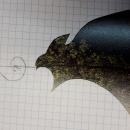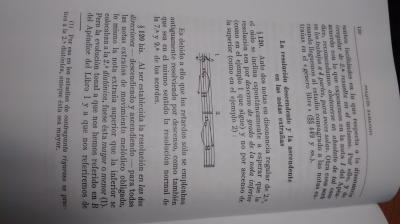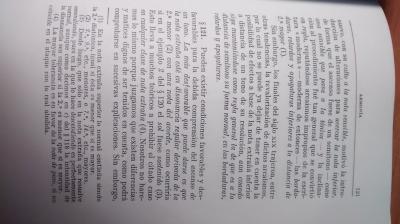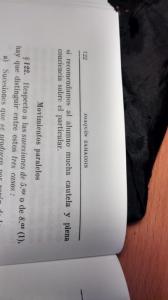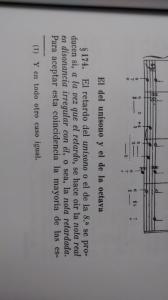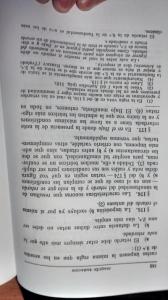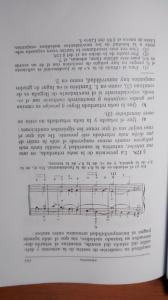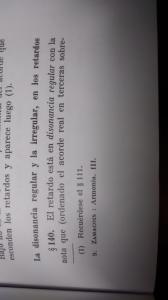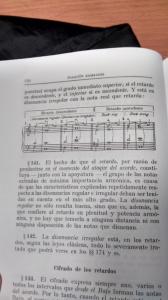Hola
Carlos, lo suyo es no inventarse cifrados que no se corresponden con la realidad. La gracia del cifrado es que te puedan entender los demás.
carlosgama escribió:
lo veo una gilipollez porque ya se ve en el numero del cifrado F#m (b5, add11) = F#m (b5,11)
En cifrado moderno no funciona así. Si pones 11 implica que hay séptima, "hasta la 11 por terceras" (1, 3, 5, 7 ,9,11) , el add quiere decir que está añadida, es decir, otra cosa distinta. Esos acordes no son iguales.
carlosgama escribió:
Yo soy de los que cifra en jazz las tensiones en paréntesis, y lo dejo bien claro, porque un acorde de oncena puede o no tener la tercera y la cuarta. Así pues un " sus" no refleja si se omite la tercera o la quinta
El "sus" significa suspendida y se suspende la tercera . Evidentemente se suspende la tercera por la nota que está al lado en la escala con lo que podemos tener sus4 o sus2. El sus no habla nunca de la quinta.
Creo que el cifrado moderno es bastante claro, ya está estudiado. (No lo he encontrado traducido)
https://en.wikipedia.org/wiki/Chord_names_and_symbols_(popular_music)
11ths[edit]
These are theoretically 9th chords with the 11th (4th) note in the scale added. However, it is common to leave certain notes out. The major 3rd is often omitted because of a strong dissonance with the 11th (4th), therefore called an avoid note. Omission of the 3rd reduces an 11th chord to the corresponding 9sus4 (suspended 9th chord; Aiken 2004, p. 104). Similarly, omission of the 3rd as well as 5th in C11 results in a major chord with alternate base B♭/C, which is characteristic in soul and gospel music. For instance:
C11 without 3rd = C-(E)-G-B♭-D-F ≈ C-F-G-B♭-D = C9sus4
C11 without 3rd and 5th = C-(E)-(G)-B♭-D-F ≈ C-F-B♭-D = B♭/C
If the 9th is omitted, the chord is no longer an extended chord, but an added tone chord (see below). Without the 3rd, this added tone chord becomes a 7sus4 (suspended 7th chord). For instance:
C11 without 9th = C7add11 = C-E-G-B♭-(D)-F
C7add11 without 3rd = C-(E)-G-B♭-(D)-F ≈ C-F-G-B♭ = C7sus4
The table below shows names, symbols, and definitions for the various kinds of eleventh chords (using C as root)
Name Symbol Quality of
added 11th Notes
Short Long
11th
(dominant 11th) C11 Cdom11 Perfect C-E-G-B♭-D-F
Major 11th CM11 Cmaj11 Perfect C-E-G-B-D-F
Minor-Major 11th CmM11 / C−M11 Cminmaj11 Perfect C-E♭-G-B-D-F
Minor 11th Cm11 / C−11 Cmin11 Perfect C-E♭-G-B♭-D-F
Augmented-Major 11th C+M11 Caugmaj11 Perfect C-E-G♯-B-D-F
Augmented 11th C+11 / C11♯5 Caug11 Perfect C-E-G♯-B♭-D-F
Half-Diminished 11th CØ11 Perfect C-E♭-G♭-B♭-D♭-F
Diminished 11th C°11 Cdim11 Diminished C-E♭-G♭-Bdouble flat-D♭-F♭
Alterations from the natural diatonic chords can be specified as C9♯11 ... etc. Omission of the 5th in a sharpened 11th chord reduces its sound to a flat-five chord. (Aiken 2004, p. 94):
C9♯11 = C-E-(G)-B♭-D-F♯ ≈ C-E-G♭-B♭-D = C9♭5
Un saludo

